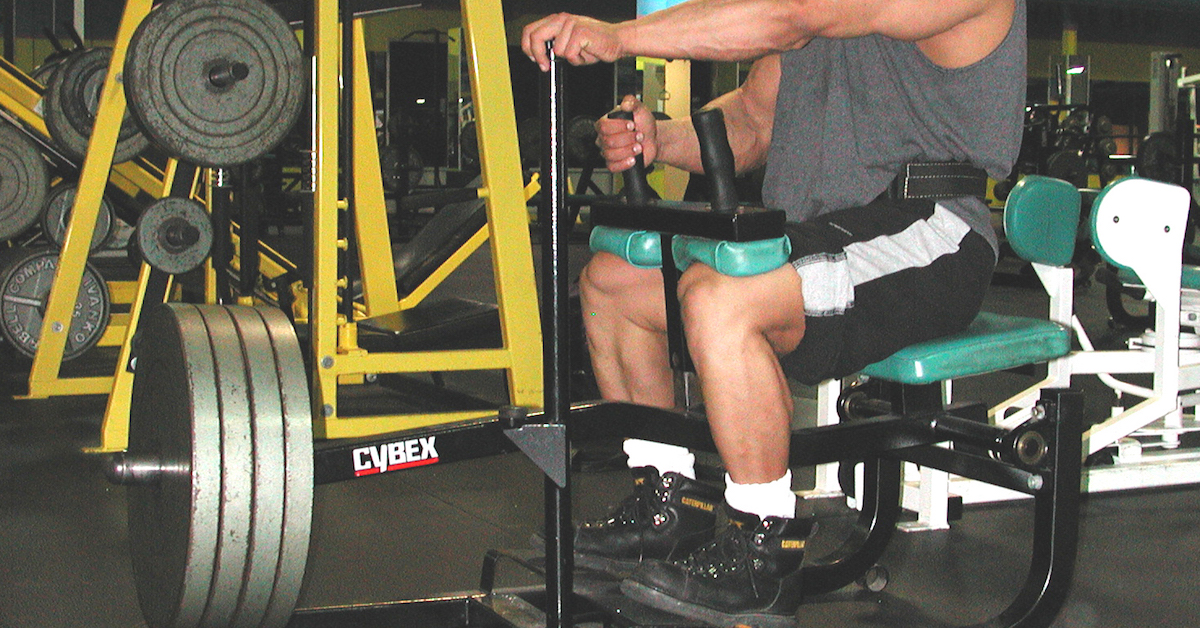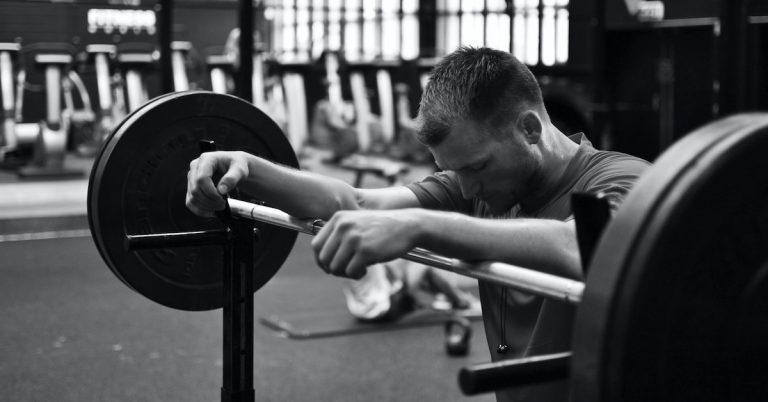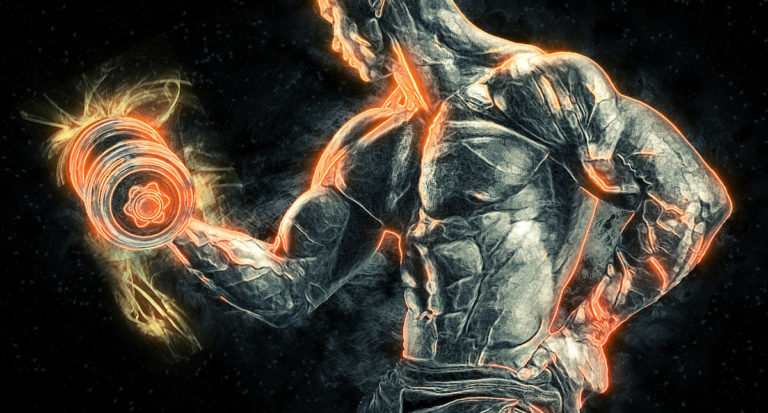Your calves are composed of two main muscles: the gastrocnemius and the soleus. The gastrocnemius is the outer diamond-shaped muscle at the back of your lower leg that’s comprised of two heads: a lateral head and a medial head. It’s the muscle that you see when you flex your calf. The soleus is a thick, flat muscle that lies underneath the gastrocnemius. You can’t really see it, but with the right training the soleus can boost your calf size and the results can be quite visible!
The soleus muscle is composed primarily of Type I fibers. These fibers have a slow contraction velocity, a low tension capacity, and a high resistance to fatigue, so it’s a good idea not to go too heavy when training them.
It’s also a good idea to train the soleus in a full range of motion. The ankle is a hinge joint that allows movement from a maximum of 20 degrees dorsiflexion to 50 degrees plantarflexion. Unlike many other muscles, the soleus keeps working at full contraction. It doesn’t transfer the stress to the bones. So when training the soleus go from a full stretch to a full contraction for maximum benefit.
Sit Down to Grow Bigger Calves
The gastrocnemius is a biarticular muscle that crosses two joints: the ankle and the knee. Its primary action is plantarflexion of the ankle when the knee is extended, thus the gastrocnemius is heavily activated during a standing calf raise. The soleus, however, is a uniarticular muscle crossing only the ankle joint and has greater involvement during a seated calf raise where the knee is bent at a 90-degree angle.
The seated calf raise is a pretty basic exercise, but I still see guys doing it wrong in the gym, so let’s quickly review.
First off, set the pads comfortably over your lower quadriceps above the knee. If the pads are set too low, you risk them sliding off. If they’re placed too high, the range of motion and optimal line of pull will diminish, thus decreasing the effectiveness of the exercise.
To do a proper seated calf raise, keep your upper body still. Don’t swing the body back and forth or use your arms for assistance. Focus on lifting your heels as high as possible at the top and lowering them all the way down to get a good stretch at the bottom. A good seated calf-raise machine will have a slanted platform or even better a rounded platform to accommodate a greater range of motion.
As opposed to the standing calf raise, magnetic resonance imaging (MRI) indicates that foot position doesn’t change muscle action in the seated calf raise, so don’t do anything special with your feet. Position them about hip-width apart and keep them straight.
The general recommendation for the seated calf raise is to perform 3 sets of 15-20 reps and for most people that works well, but after a while progress stagnates. Using drop sets at that point can be quite effective. This method of training allows you to fatigue a wider spectrum of fibers and encourages growth in a muscle that is often stubborn to grow!
Here’s how it works…
Set the machine with a weight that allows 10 reps maximum and then go for it. As soon as you finish, drop the weight and do another 10 reps. If you think it’s bad at that point, it gets worse! Once more, strip some weight off and finish off with 10 more grueling reps. Do this all with no rest in between. When you regain your senses, repeat the process two more times for a total of 3 sets and 90 reps. That’s plenty of volume with decent intensity, enough to induce some serious muscle hypertrophy… after you recover from the soreness, of course!
Don’t forget the other calf muscles!
MRI studies show that the standing one-leg calf raise hits just about every muscle below the knee. This exercise is usually performed with a straight leg. While in theory 180 degrees may be the optimal angle for maximal recruitment of the gastrocnemius, it’s been found that a straight leg generates less torque than when the knee is bent to 160 degrees. Take advantage of the added strength by unlocking your knee and keeping the leg semi-stiff throughout the movement.
To load during a one-leg calf raise, hold a dumbbell on the same side as the working leg. The other hand can be used for support. As always, watch your posture!
And don’t forget to train the tibialis anterior. As I’ve mentioned in the past, everyone does work for the back part of the lower leg, but hardly anyone does work for the front part. The tibialis anterior, the major shin muscle, is quite often neglected and it’s unfortunate because a significant discrepancy between this muscle and your calves can limit growth. Make sure to add some work for your tibialis anterior on a regular basis (click here for a couple options).
A Prescription for Bigger Calves
If your calf training is in a rut, the following routine may be just what the doctor ordered to get things “growing” again:
A. Seated Calf Raise: 3 x 10/10/10 @ 2020, 180s
B1. Standing Semi-Stiff One-Leg Calf Raise: 3 x 12-15 @ 3010, 60s
B2. Seated Cable Tibialis Raise: 3 x 15-20 @ 1011, 60s
Do the routine twice a week for a good month and watch those calves turn into cows!

The Rest-Pause Method for Massive Calves
Calves are notoriously challenging to develop, but after decades of trial and error, I’ve discovered a foolproof method to make

My Favorite Leg Finisher
Everything in context! I’m squatting with 225 pounds in the video below. It doesn’t look like much weight except that

How to Get a Biceps Vein
Growing up, all I ever wanted was the “biceps vein!” I wanted it even more than huge biceps. Of course,
follow
Error: No feed with the ID 2 found.
Please go to the Instagram Feed settings page to create a feed.
